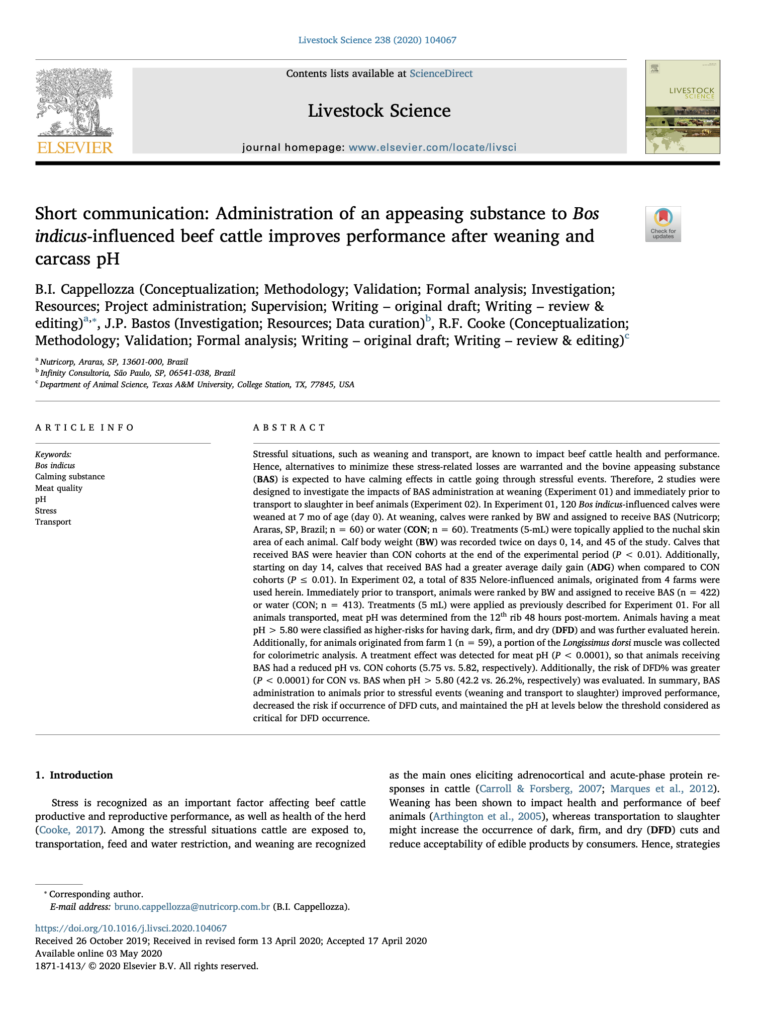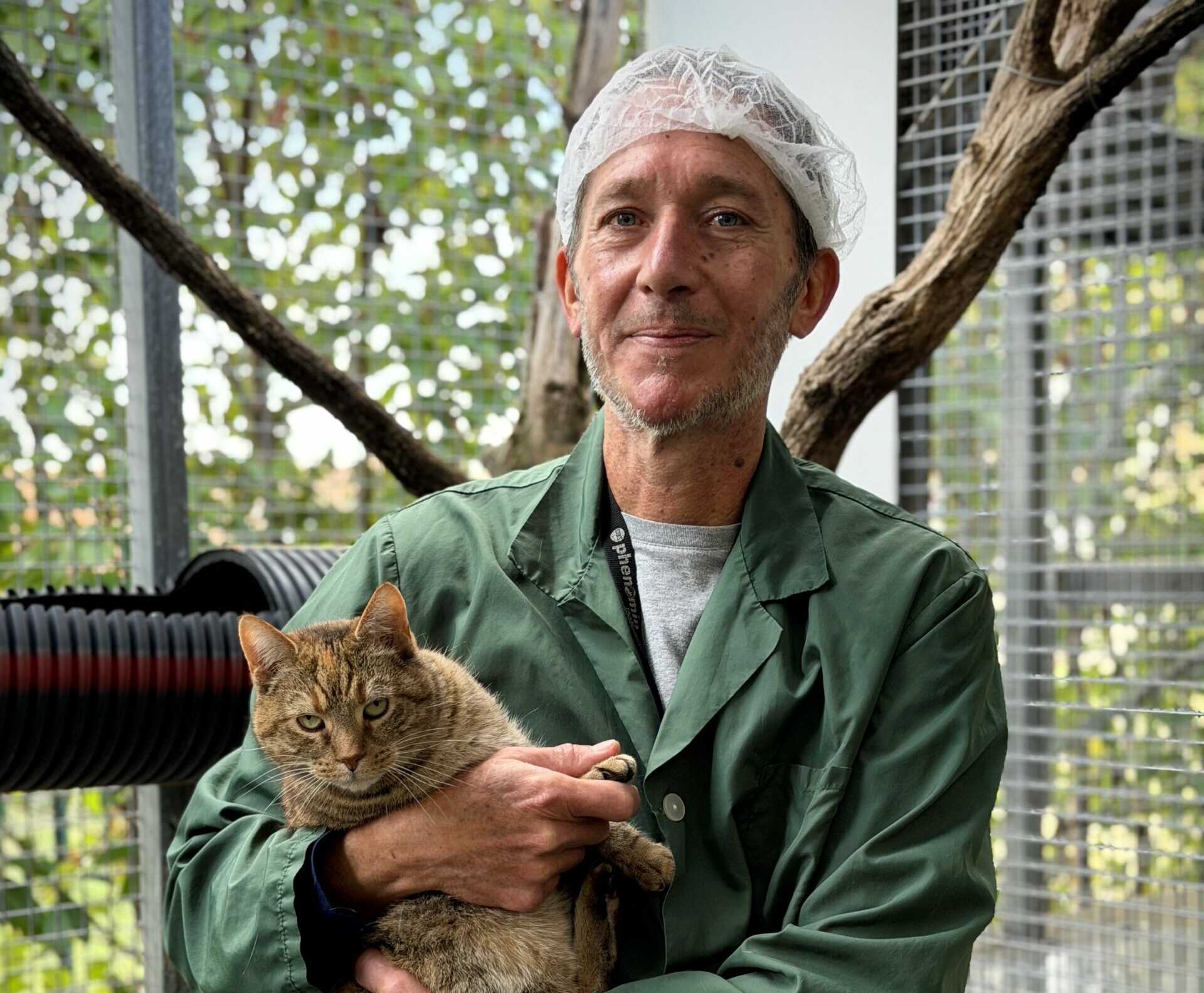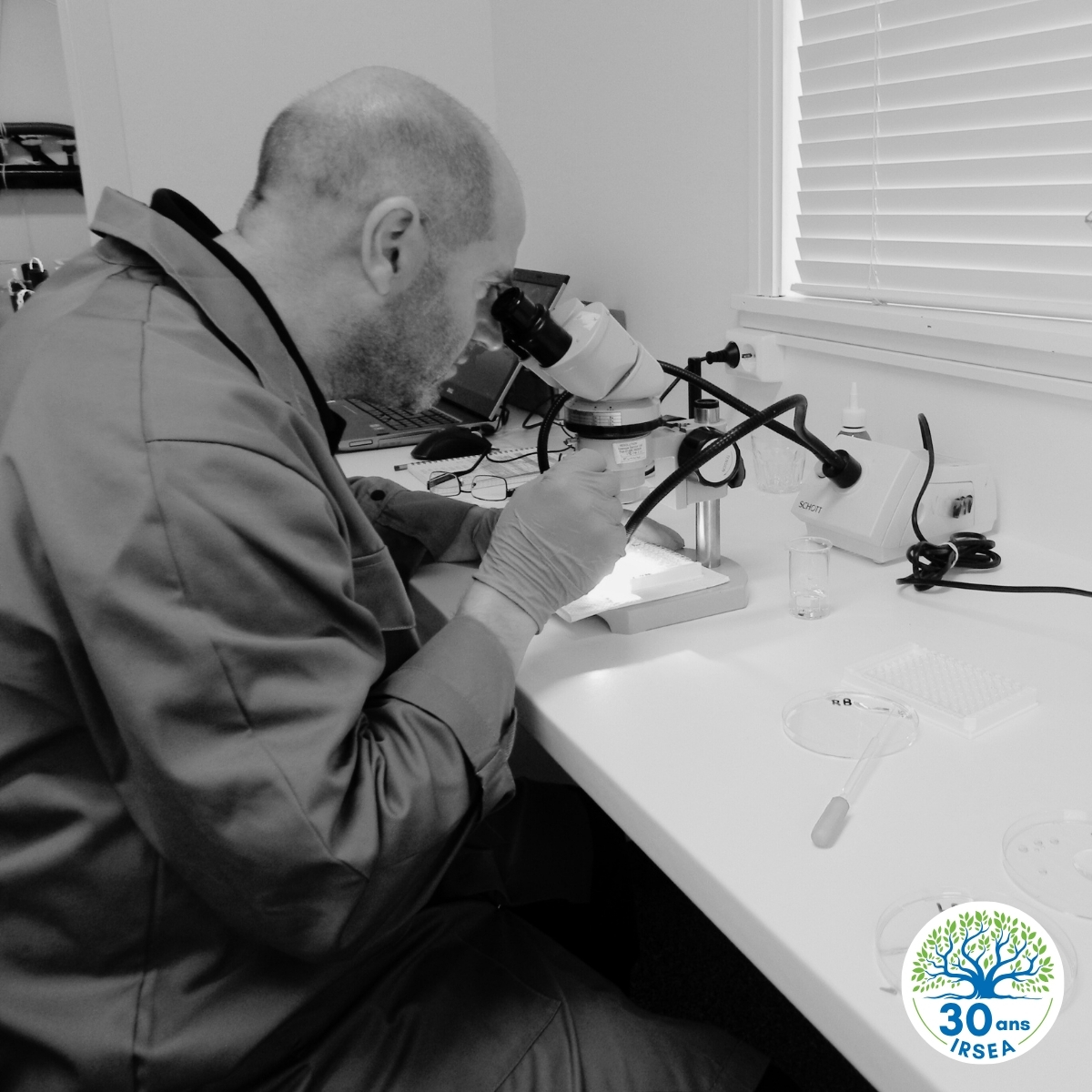Abstract:
Stressful situations, such as weaning and transport, are known to impact beef cattle health and performance. Hence, alternatives to minimize these stress-related losses are warranted and the bovine appeasing substance (BAS) is expected to have calming effects in cattle going through stressful events. Therefore, 2 studies were designed to investigate the impacts of BAS administration at weaning (Experiment 01) and immediately prior to transport to slaughter in beef animals (Experiment 02). In Experiment 01, 120 Bos indicus-influenced calves were weaned at 7 mo of age (day 0). At weaning, calves were ranked by BW and assigned to receive BAS (Nutricorp; Araras, SP, Brazil; n = 60) or water (CON; n = 60). Treatments (5-mL) were topically applied to the nuchal skin area of each animal. Calf body weight (BW) was recorded twice on days 0, 14, and 45 of the study. Calves that received BAS were heavier than CON cohorts at the end of the experimental period (P < 0.01). Additionally, starting on day 14, calves that received BAS had a greater average daily gain (ADG) when compared to CON cohorts (P ≤ 0.01). In Experiment 02, a total of 835 Nelore-influenced animals, originated from 4 farms were used herein. Immediately prior to transport, animals were ranked by BW and assigned to receive BAS (n = 422) or water (CON; n = 413). Treatments (5 mL) were applied as previously described for Experiment 01. For all animals transported, meat pH was determined from the 12th rib 48 hours post-mortem. Animals having a meat pH > 5.80 were classified as higher-risks for having dark, firm, and dry (DFD) and was further evaluated herein. Additionally, for animals originated from farm 1 (n = 59), a portion of the Longissimus dorsi muscle was collected for colorimetric analysis. A treatment effect was detected for meat pH (P < 0.0001), so that animals receiving BAS had a reduced pH vs. CON cohorts (5.75 vs. 5.82, respectively). Additionally, the risk of DFD% was greater (P < 0.0001) for CON vs. BAS when pH > 5.80 (42.2 vs. 26.2%, respectively) was evaluated. In summary, BAS administration to animals prior to stressful events (weaning and transport to slaughter) improved performance, decreased the risk if occurrence of DFD cuts, and maintained the pH at levels below the threshold considered as critical for DFD occurrence.
Auteur: B.I. Cappellozza (Conceptualization; Methodology; Validation; Formal analysis; Investigation; Resources; Project administration; Supervision; Writing – original draft; Writing – review & editing)a,⁎, J.P. Bastos (Investigation; Resources; Data curation)b, R.F. Cooke (Conceptualization; Methodology; Validation; Formal analysis; Writing – original draft; Writing – review & editing)c
Keywords: Bos indicus, Calming substance, Meat quality, PH, Stress, Transport
En savoir plus: https://www.sciencedirect.com/science/article/abs/pii/S1871141319314982?via%3Dihub





